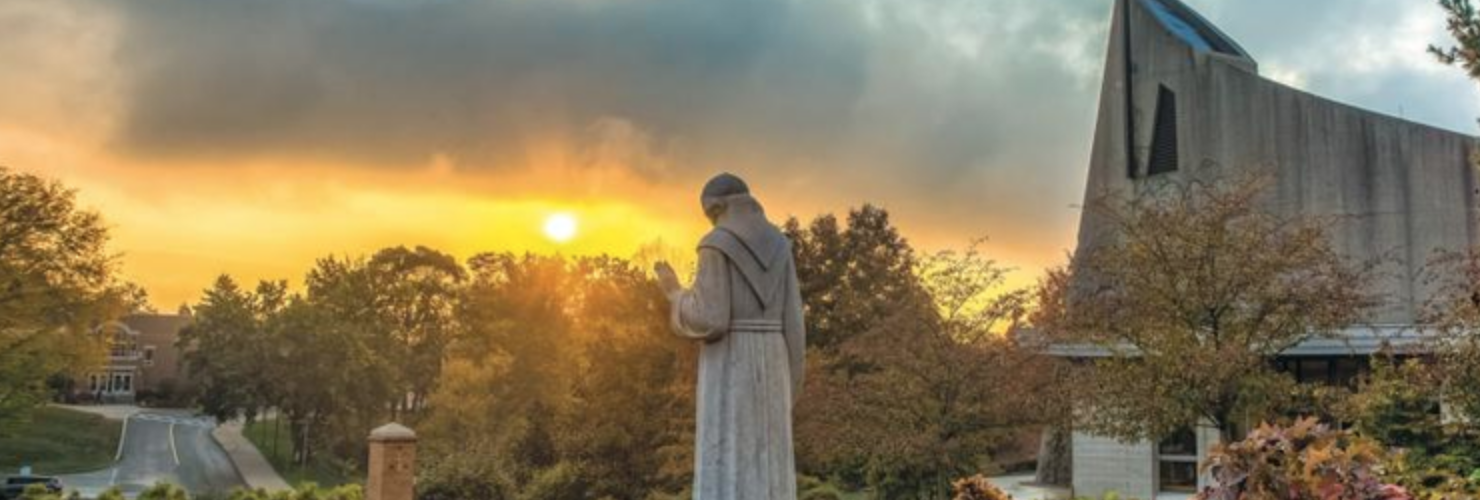
What is going to happen on college and university campuses this fall?
That’s a huge question, right now, and nobody knows the answer yet. Parents and students want to know. Football fans want to know. Trustees want to know since, in the end, they’re the people who will end up trying to handle the financial fallout of the coronavirus crisis (including predictions of a second wave hitting with the flu-season in November).
But there is more to this story than COVID-19, if you have been paying close attention to higher-education trends in recent years. Leaders in higher-ed were already bracing for the year 2025 — when the enrollment surge linked to the massive millennial generation would be coming to an end.
Now, look past all of those state-funded schools — big and small. How will these trends hit private schools, including faith-based private schools. Many have been facing rising tides of red ink, and that was before the arrival of the coronavirus.
“Crossroads” host Todd Wilken and I talked about all of these issues, and more, during this week’s podcast (click here to tune that in). The hook for this discussion was my “On Religion” column for this week, which included this crucial passage:
… The coronavirus crisis is forcing students and parents to face troubling realities. A study by McKinsey & Company researchers noted: “Hunkering down at home with a laptop … is a world away from the rich on-campus life that existed in February.”
What happens next? The study noted: “In the virus-recurrence and pandemic-escalation scenarios, higher-education institutions could see much less predictable yield rates (the percentage of those admitted who attend) if would-be first-year students decide to take a gap year or attend somewhere closer to home (and less costly) because of the expectation of longer-term financial challenges for their families.”
This could crush some schools. In a report entitled “Dawn of the Dead,” Forbes found 675 private colleges it labeled “so-called tuition-dependent schools — meaning they squeak by year-after-year, often losing money or eating into their dwindling endowments.” While it’s hard to probe private-school finances, Forbes said a “significant number” of weaker schools are “nearly insolvent.”
How many of America’s truly faith-defined private colleges are in that “Dawn of the Dead” list? It’s hard to know, but you know that there are a few.
That means there are news stories to cover linked to this trends — local stories in multiple zip codes from coast to coast.
Like I said, faculty and administrators on these faith-defined private campuses already knew that there was pain ahead, linked to demographic trends and the rising number of legal and academic challenges coming from their critics (think LGBTQ strategists involved in sports, accreditation boards and internship supervisors in public-school systems).
It’s hard to make strategic plans and (#GULP) budget cuts when — in many cases — faculty and trustees differ on key issues of theology, morality and other forms of academic politics.
The good news, for schools with strong denominational ties, is that they have loyal churches, alumni and parents who are committed to helping them. The bad news? Well, some of those churches are in decline. Some of those parents have budget problems and are looking for less-expensive options for their children. And key players in some of those churches believe that their colleges are getting a bit too uppity and/or progressive on matters of doctrine.
There are story hooks all over the place in these dramas.
But sometimes reporters simply need to follow the money. Here is a rather remarkable example, which arrived in my email box this week. The headline: “Franciscan University to Cover 100% of Tuition Costs for Fall 2020 for New Students.”
That’s bold. And this is a conservative — but not “traditionalist” — Catholic school that has, in recent decades, made a name for itself by producing flocks of new priests and nuns. I have spoken there several times and the atmosphere on campus is kind of like an evangelical school, only with monks. Here is a chunk of that press release:
STEUBENVILLE, OHIO — In response to the unprecedented economic fallout of the COVID-19 pandemic, Franciscan University of Steubenville will cover the remainder of tuition costs, after scholarships and grants have been applied, for the fall 2020 semester for all incoming full-time undergraduate students enrolled in its on-campus programs. The president and Board of Trustees unanimously approved Step in Faith, a COVID-19 response plan, at their April 18 meeting.
President Father Dave Pivonka, TOR, said, “As a University, we feel called by God to ease the burden for students, so they can experience the irreplaceable value of a Franciscan University education. We’ve heard from many students whose concerns over the pandemic are making the decision to leave home for college more difficult. Also, many families and students have seen their ability to pay for college evaporate due to the economic impact of the coronavirus. We hope this unique response will help them to overcome these obstacles and uncertainties and step out in faith with us.”
The idea of using some of the University’s reserves to cover tuition costs came forward after Father Pivonka asked faculty and staff to join him in prayer for “fresh, creative, Holy Spirit-inspired ideas” for addressing the challenges Franciscan University and its students were facing due to the pandemic.
Tapping into the university’s “reserves”?
Yes, that’s what he said. There are some private-college leaders who can’t use that word, these days.
Meanwhile, here is another angle on these stories, care of an interview — published by Rod “Benedict Option” Dreher — with theologian David Whidden of Franciscan Missionaries of Our Lady University, or FranU, in Baton Rouge, La.
This is a small, no-frills commuter school — annual tuition is about $10,000 — that combines the basics in Catholic thought with programs for pre-med and nursing students. The key is that the school is small and has low costs. Here is a chunk of that interview:
All the things that used to be disadvantages for us are suddenly advantages. We have no dorms, no Greek life, no sports, and not even a cafeteria, so we haven’t had to return any money to students. And let me add that while the lack of those things might have seemed like a disadvantage before the pandemic, I never considered them to be a disadvantage, because when I walked into a classroom I knew my students had only one reason to be there, which was for an education (for instance, the day after the national [LSU football] championship game I had my first class of the semester at 7:45 am and only had two out of 29 students absent). Most of our budget is spent on what is supposed to be the main mission of higher education, which is to teach and support students, not on things that are secondary to the university. …
Our other secret weapon is that we have a niche in healthcare degrees, so most of our students are enrolled in undergraduate programs like nursing, respiratory therapy, radiologic technology, physical therapy assisting, biology (pre-med or pre-physicians assistant), and the like. As the pandemic has made clear, there is an ongoing need for students with those degrees. But their education all takes place in a Catholic and Franciscan context that forms them to be not just technically proficient, but also deeply human in their approach to their vocations. Next year we are launching a program that will allow us to make sure that all our students are also properly formed with regard to healthcare ethics, which is something that we have also seen a need for in the pandemic. I like to say that we have majors that matter, and that has never been more clear than in the last month. …
Also, our classes are small, usually capped for undergraduates at around 32, so we know our students by name. And we are a Catholic college that actually treats the Catholic intellectual tradition with respect, not as a burden to be avoided, but as a gift to be shared.
Clearly, this is not the normal business model for a Christian private school. But it appears that smaller may be better, and it helps to have a clear focus on service to the local community.
Will others follow that path? The battles on many campuses are going to be sad and brutal, at the same time.












